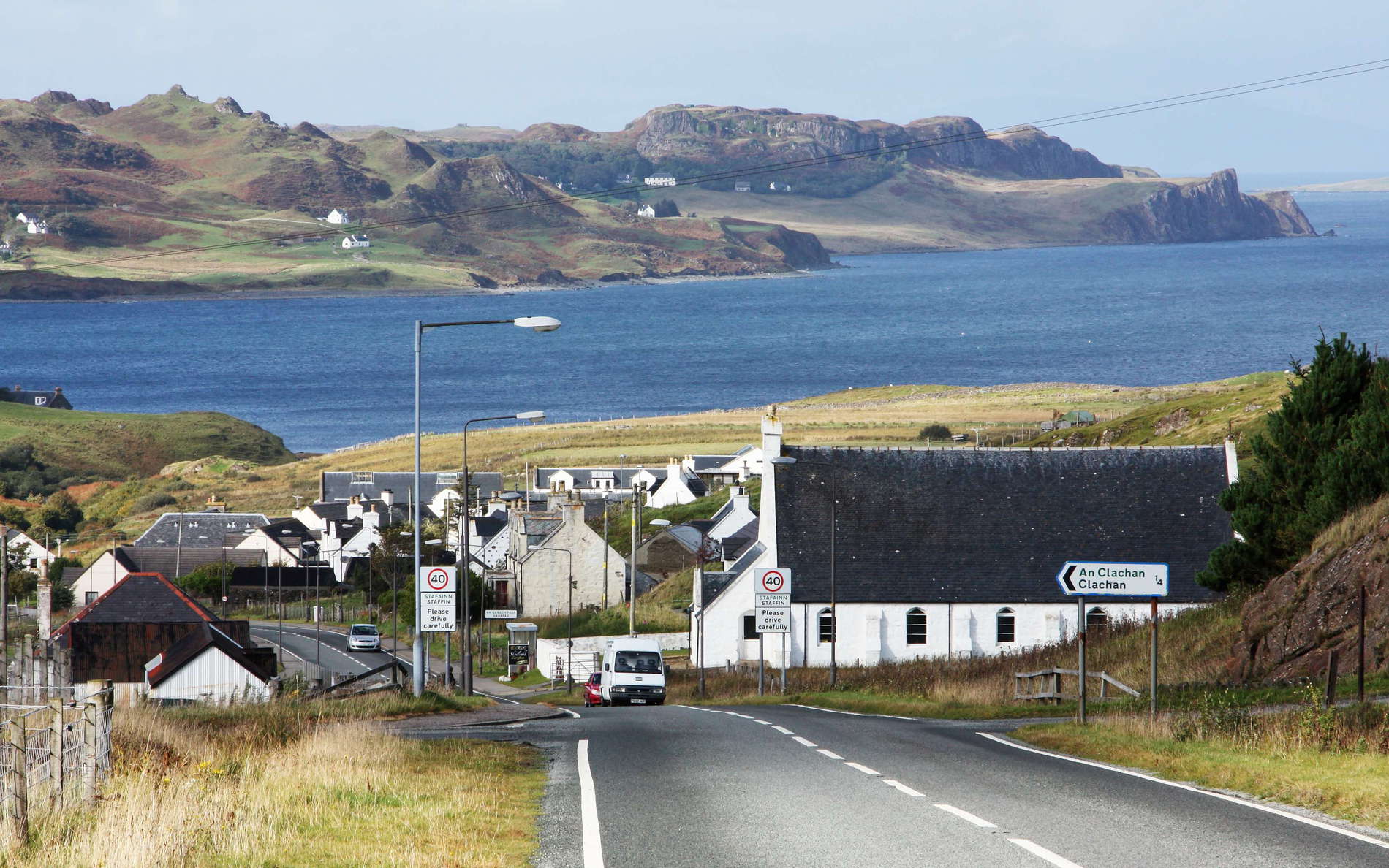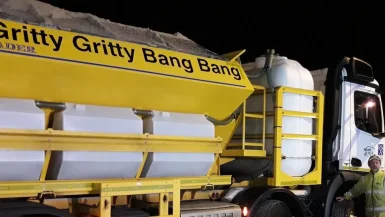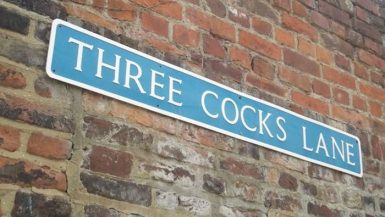Staffin: Where Dinosaurs Walked and Highland History Lives
In August 2019, I found myself in the village of Staffin on the Isle of Skye—a place where the land tells stories older than humanity itself. Nestled beneath the towering cliffs of the Trotternish Ridge, Staffin is more than just a scenic stop on Skye’s northeastern coast. It’s a living museum of geological wonder, prehistoric life, and deep-rooted Highland culture.
🏞️ Staffin: A Landscape Shaped by Time
Staffin lies along the A855 coastal road, about 17 miles north of Portree. The village is framed by dramatic scenery: the Quiraing to the west, the sea to the east, and the ancient landslip formations of the Trotternish Peninsula all around. The area is rich in crofting heritage, Gaelic language, and community resilience—but beneath its surface lies a deeper story, one that stretches back hundreds of millions of years.
🦕 Dinosaur Footprints at An Corran Beach
Staffin’s most famous geological claim to fame is its dinosaur footprints—yes, actual fossilized tracks left by prehistoric giants. At An Corran beach, just east of the village, you can see three-toed footprints embedded in the sandstone bedrock. These prints are thought to belong to herbivorous Ornithopods and possibly carnivorous Theropods, including Megalosaurus and Stegosaurus.
The footprints date back to the Middle Jurassic period, around 170 million years ago, when Skye was a subtropical island near the equator. At that time, the land was dotted with lagoons and mudflats—perfect conditions for preserving footprints. Over time, the impressions filled with sediment, hardened, and became part of the rock record.
Skye is now recognized as one of the world’s most important sites for mid-Jurassic fossils, with an estimated 15% of global discoveries from this period found on the island. The footprints at Staffin were first discovered in 2002 by a local resident walking his dog—a reminder that even today, Skye’s secrets can be uncovered by chance.
🧬 Staffin Dinosaur Museum
To dive deeper into the area’s prehistoric past, the Staffin Dinosaur Museum is a must-visit. This small but fascinating museum houses fossilized bones, teeth, and casts of footprints found in the region. It’s run by local geologist Dugald Ross, whose passion for Skye’s ancient life has helped put Staffin on the paleontological map.
The museum offers insight into the types of dinosaurs that once roamed the island, including sauropods—massive, long-necked herbivores—and smaller, agile predators. It’s a great stop for families, science enthusiasts, or anyone curious about the deep time beneath their feet.
🗿 Archaeology and Ancient Settlements
Staffin’s human history is just as rich. Archaeological evidence shows that people have lived in the area for over 8,000 years. At An Corran, excavations revealed a Mesolithic shell midden—essentially a prehistoric refuse heap—containing stone tools and remnants of seafood meals. These early hunter-gatherers arrived long after the dinosaurs but left their own mark on the land.
Nearby, you’ll find Neolithic burial cairns at Cadha Riach and Bronze Age structures like Dùn Raisaburgh and Dùn Grianan. These brochs and duns—circular stone towers with double walls—were built as fortified homes and status symbols. Though many are now in ruins, their stones were often repurposed for later farm buildings and boundary walls.
The landscape is also dotted with hut circles, remnants of Iron Age roundhouses that once housed entire communities. These circular dwellings reflect a way of life deeply connected to the land, livestock, and seasonal rhythms.
🌿 A Living Landscape
Staffin isn’t just a place of fossils and ruins—it’s a living community. Gaelic is still spoken here, and crofting remains a vital part of daily life. The Staffin Community Trust has worked to preserve the area’s cultural and natural heritage, including efforts to protect the dinosaur footprints and promote sustainable tourism.
The views from Staffin Beach stretch across the Sound of Raasay, and on clear days, you can see the Outer Hebrides shimmering on the horizon. The Quiraing looms to the west, offering one of Scotland’s most iconic hikes through landslide-sculpted terrain.
Final Thoughts
Staffin is a place where the past is always present. From the footprints of dinosaurs to the stones of ancient dwellings, the land holds stories that span millennia. Whether you’re a geologist, a history buff, or simply a traveler seeking wonder, Staffin offers a rare chance to walk through time.
So if you find yourself on the Isle of Skye, don’t just pass through—pause in Staffin. Look down at the rocks, up at the cliffs, and out to sea. You’ll be standing in one of the most extraordinary corners of Scotland, where every step is a step into history.
Sources:
History Hit – Dinosaur Footprints on Skye
Skye EcoMuseum – Staffin Through Time
Scotland Off the Beaten Track – Staffin Dinosaur Footprints




Leave a reply
You must be logged in to post a comment.